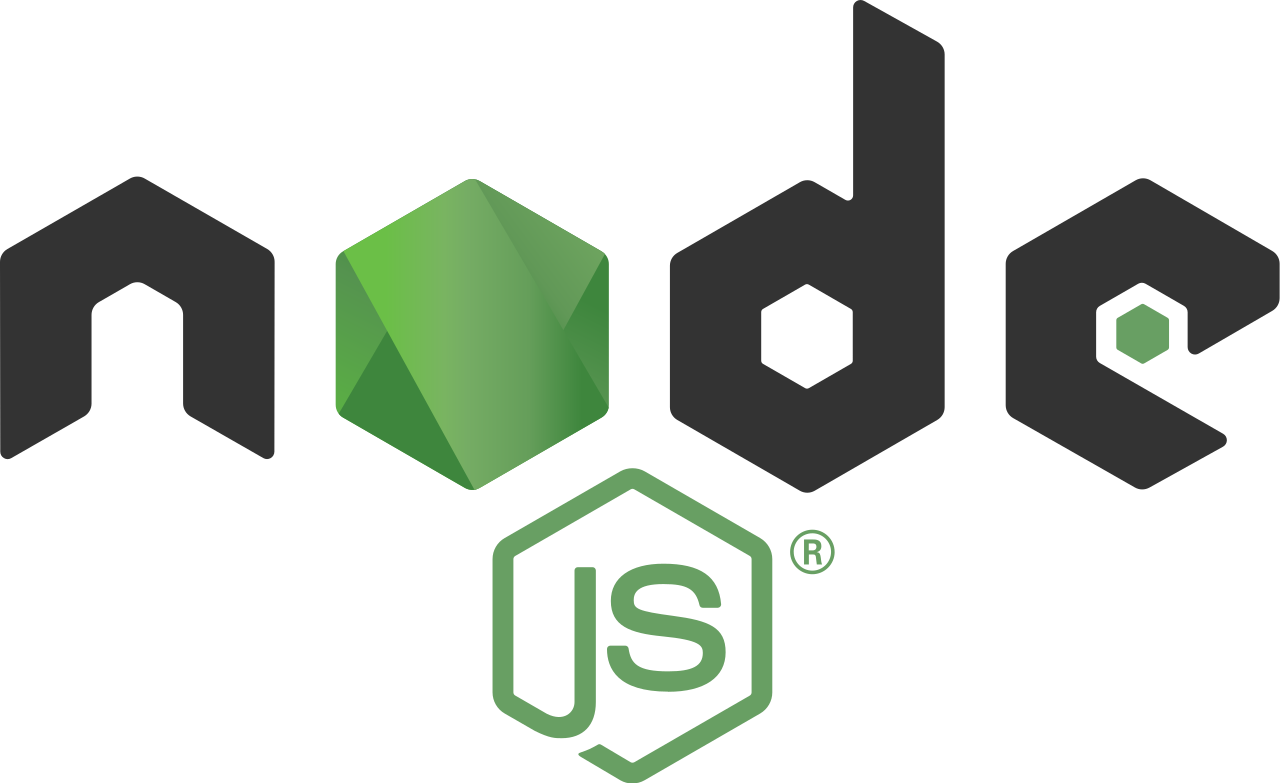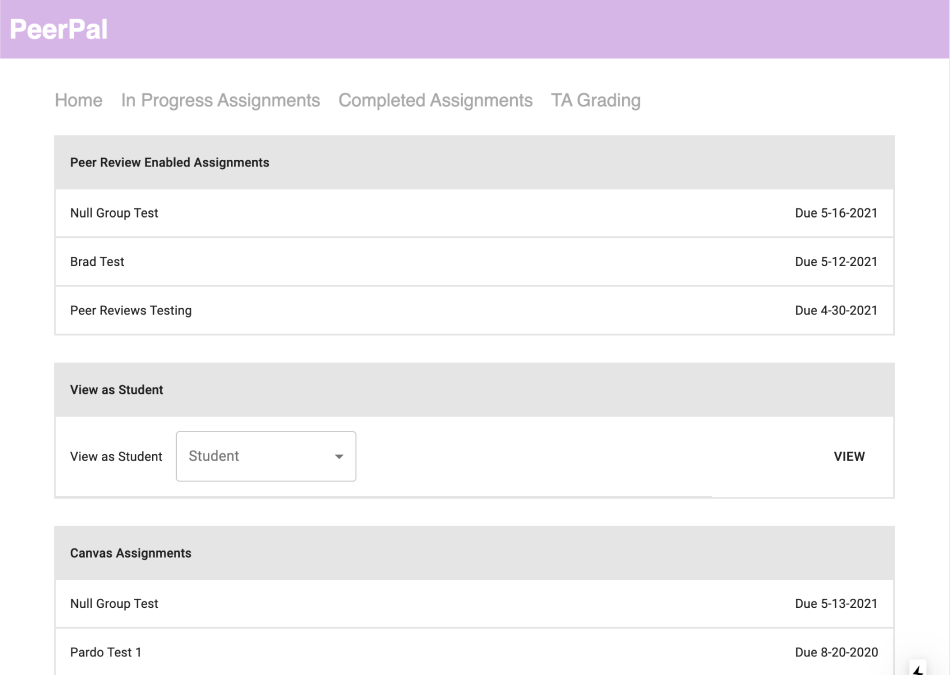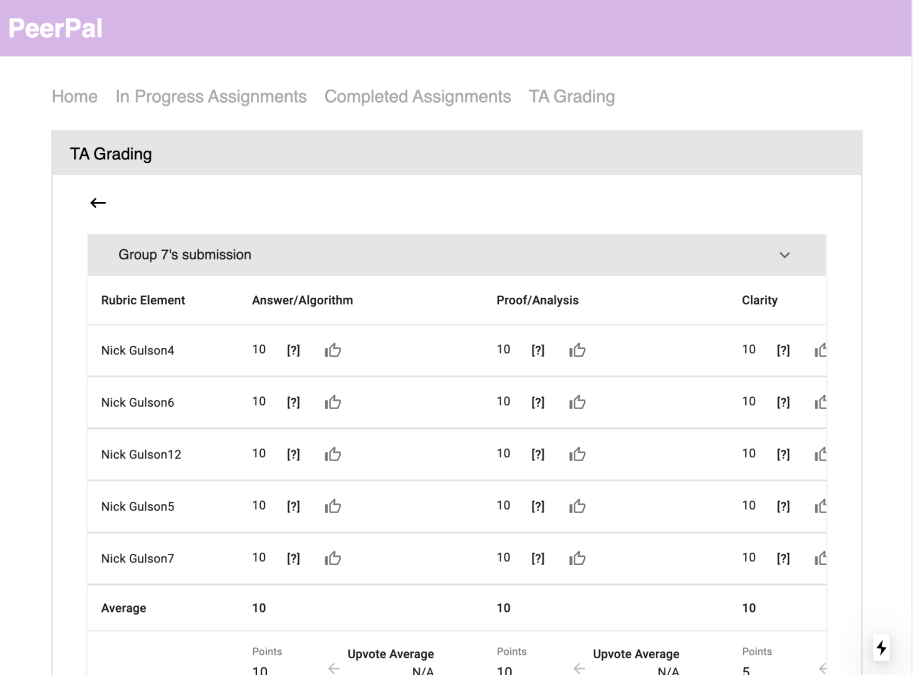



Our impact reaches far beyond just one person or group of people. The areas and groups that peer grading have an impact on are more numerous than one would think.
Students get to grade other students' work (anonymously of course!) which can show them how other students work and think and give meaningful feedback to their peers.
There is more cohesion in the classroom as students and faculty can discuss different ideas and thoughts from the peer grading assignments.
Instructors can focus on teaching instead of having to allocate time to grade each student's work. The decreased grading load is definitely helpful!
We can study and understand how peer grading affects learning outcomes / game theory, a research topic that Professor Hartline is very interested in.
Not only are we re-imagining how students grade each others assignments, but we are also creating opportunities for CS students to hone their craft in a real project setting.
Approaching peer-grading with an understanding of human-centered design allows us to get creative with how we imagine the peer-grading experience.
Students get to take ownership of the project and work on the features that are most interesting to them. Learn by doing, and watch your work be used in real classrooms.
Some might call it a buzz word, we call it our development cycle! Work iteratively, craft user stories, assign story points, and develop efficiently with our Agile workflows.




By incorporating graded peer review exercises into course work, PeerPal introduces a new learning system with increased student engagement.
We've built an end-to-end workflow for students to conduct peer reviews, receive grades, and everything plugs directly into Canvas!
Here are some possible avenues to work on for PeerPal:

Iteratively design and create new interfaces for students, TAs, and instructors to use.
Conduct A/B testing on current design decisions, incorporate principles of user-centered design, create something that you would want to use in one of your classes.
